FUE2 TECHNOLOGY
According to current scientific knowledge, the only lifelong solution to baldness is hair transplantation.
With the FUE2 Safe System hair transplantation method, we can achieve the best possible results, with a painless procedure and the least possible discomfort.
STATE-OF-THE-ART TECHNOLOGY
At our clinic, we use the state-of-the-art FUE2 Safe System hair transplantation method. We offer a maximum hair guarantee for hair transplantation, as well as unique hair care aftercare treatments that can achieve and maintain beautiful, luscious hair for the long term.
Learn about FUE2 technology, find out exactly what happens to you, hour by hour, on the day of surgery. Follow a timeline of how your hair will develop after the implantation.
The cutting edge of hair transplantation
In practice, hair transplantation means transferring the hair from the back of the head to the area of hair loss. This procedure allows these hair follicles to be removed and then transferred very safely, with almost no hair loss.
The first hair transplant was performed in 1952 in New York. At that time, the incision was 4mm in diameter, so although the hair follicle units transplanted on the top of the head were preserved, the donor area did not look very nice after the operation.
The FUT method became popular in the 1990s. A strip of scalp hair was taken from the donor area and distributed over the top of the head. Although the method was revolutionary in its day and mysteriously is still used in the US today, a truly aesthetic surgical solution has yet to be found.
By 2005, the method was born, an improved version of which is still used today - FUE. FUE.
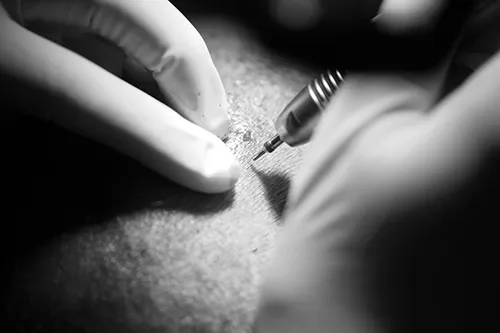
A FUE (Follicular Unit Extraction) lényege, hogy egy golyóstollnak kinéző, 1 mm átmérőjű körkéssel kiemelnek egy szőrtüszőegységet (graftot) a fejbőrből, ezt tápoldatba helyezik, majd a fejtetőre ültetik. A bemetszés olyan kicsi, hogy a hegesedési folyamat egy hétre redukálódott. A módszert úgynevezett „No touch” technológiaként tartják számon.
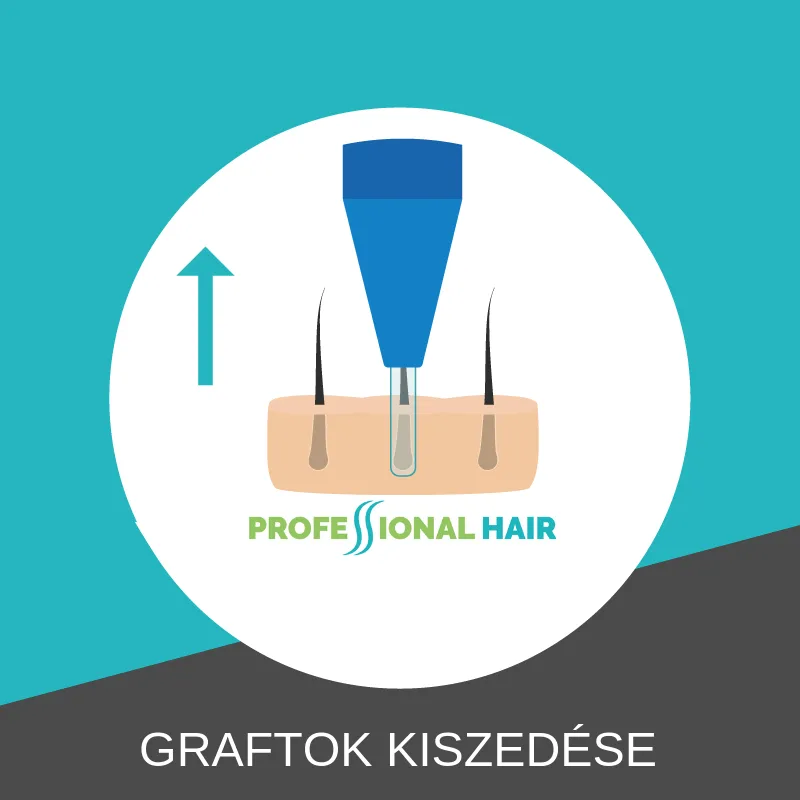
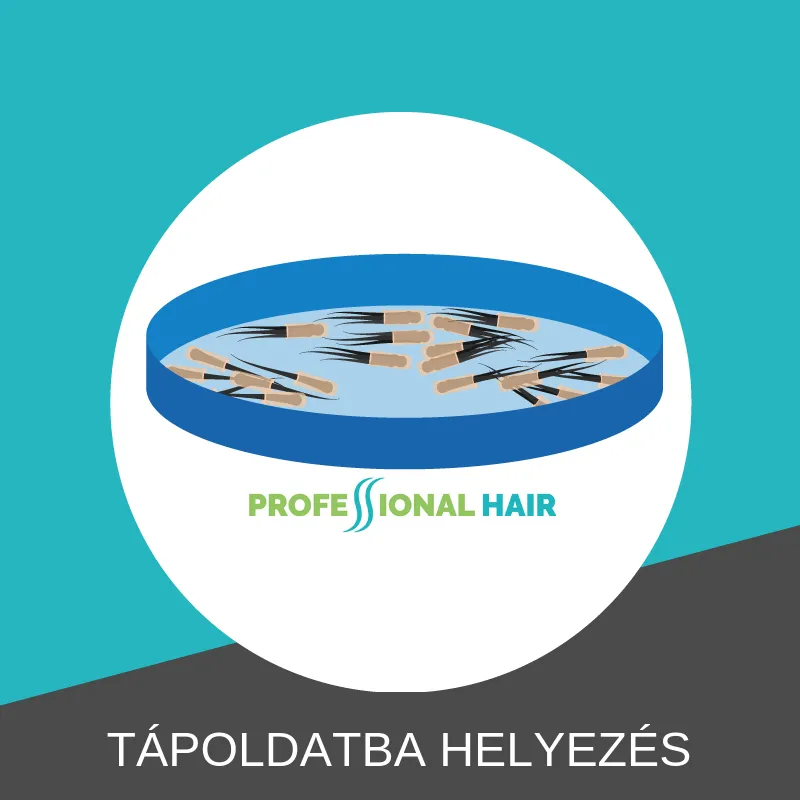
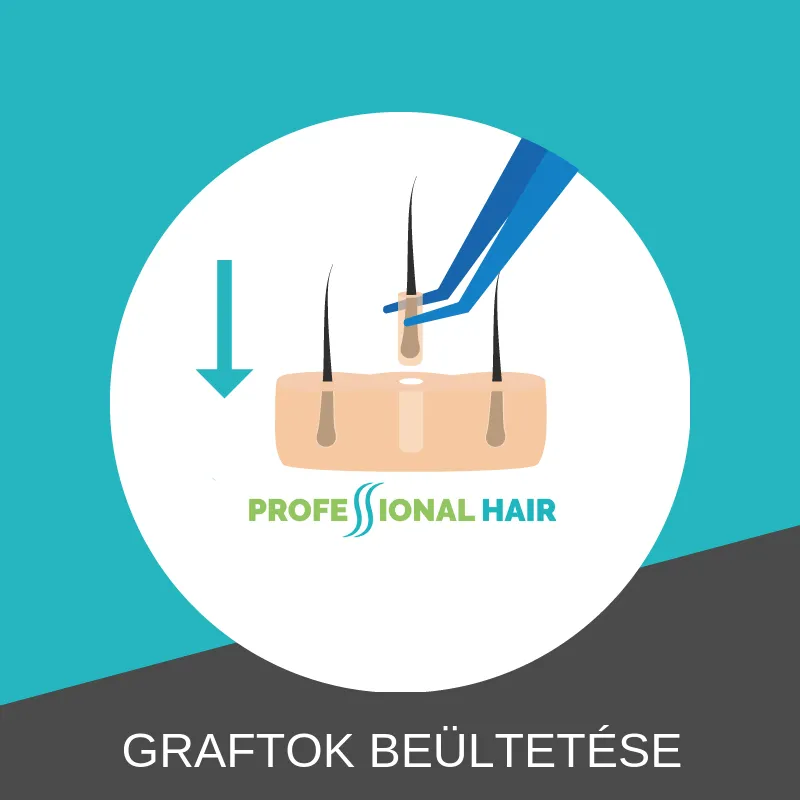

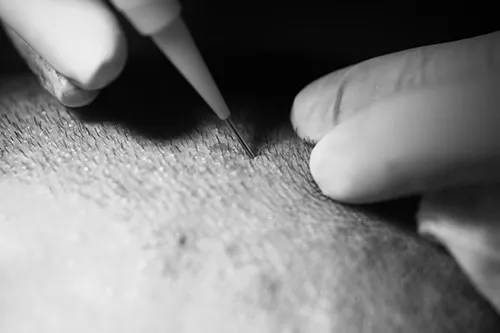
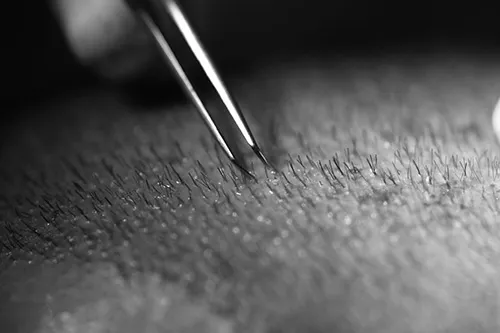
The perfect tool
The breakthrough in hair transplantation was not so much the idea as the creation of the perfect device. This is the Harris needle.At Professional Hair Clinic, we use this original, American-made Harris needle for every single patient's hair transplant.
The FUE2 Safe System goes one step further, in that the needle diameter is even smaller, 0.7- 0.9 mm. This makes it even more ideal for scarring,and the donor is completely unaware of the location of the prominent grafts.It is no longer possible to use a needle smaller than this without damaging the hair follicle units.
There are clinics that talk about a newer method, but the truth is that neither the smaller diameter nor the separation of the hairs is advantageous for the hair transplantation process, in fact! It is ideal for the hairs to remain in one unit,any interference with this can damage the root structure.
Western European and American hair transplant doctors all support this, which is why we stick to the FUE2 Safe System method. One innovation in the West with FUE2 is robotisation. For us it is important that the patient feels at home and comfortable with us, we believe in the caring, precise work of our doctors and we would not replace them with a robot.
What happens on the day of surgery?
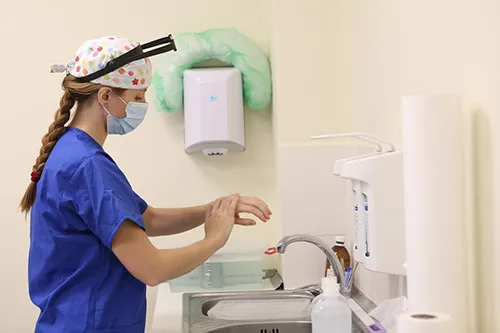
Spend a virtual day with us at the Professional Hair clinic! What happens on the day of surgery with FUE2 technology? Rest assured, when you book your surgery day you will receive all the information you need to be perfectly prepared for your procedure.
08:00
When you arrive, you will go over the details agreed at your consultation with your doctor once again to make sure everything goes according to your expectations. He will cut your hair and then draw a hairline for you. This is the line where your hair will start to grow on your forehead. The shape and placement of this will of course be adapted to your needs.
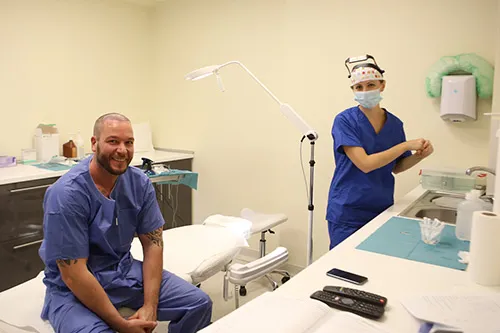
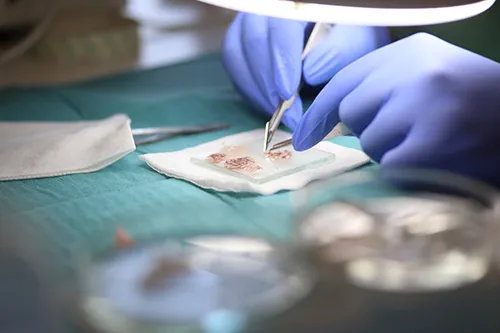
08:30
In the morning, you can lie on your stomach on a comfortable bed and dream about your future hair crown. The doctor will then begin to extract the hairs from the donor area for implantation. Using a special tool, he or she will lift out the grafts one by one. You'll always be given a local anaesthetic before the procedure, which can be a little uncomfortable, but you shouldn't have to worry about a lot of pain. Once the anaesthetic has taken effect, your doctor is guaranteed to remove the grafts painlessly. The grafts that are removed are placed in a physiological solution for cleaning and sorting.

12:00
Once the right number of hairs have been removed, everyone has a lunch break, you have the opportunity to have lunch, stretch a bit and see how the process is going. You can also ask any questions you may have.
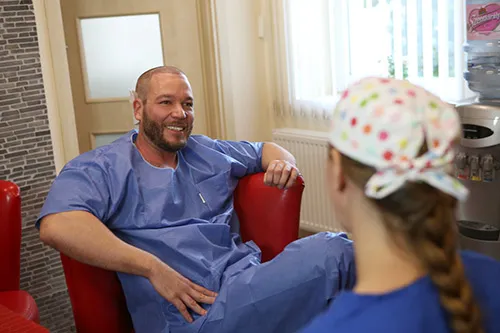
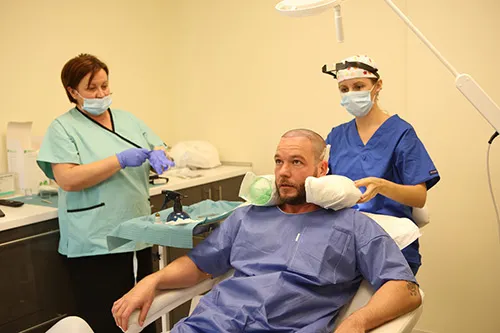
13:00
After the break you will be in a comfortable relaxation position in your chair. Your doctor will prepare your scalp for implantation. You will again be given an anaesthetic so that you can enjoy the birth of your new crown of hair without any disturbances. The hair follicles that were removed earlier in the morning will be replaced. You can also watch a film or listen to your favourite music. Don't think of it as a horror scene with all kinds of gadgets. It's a much friendlier process, the needle also looks like a slightly puffy Rotring pencil.

18:00
In the afternoon, you can go home happy in the knowledge that you've done away with baldness for life. Just a few more months of patience and you'll have your old, luscious hair back for good! Your surgeon will provide you with all the important information and instructions you need to follow in the days and weeks to come to best protect your hair and stimulate maximum growth.
If you are having a two-day operation, you will be released at the end of the first day. You can relax in the comfort of your own home before the second day.
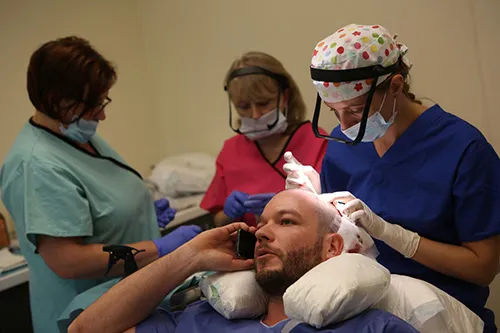
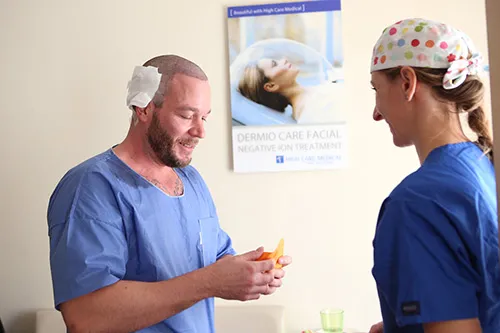
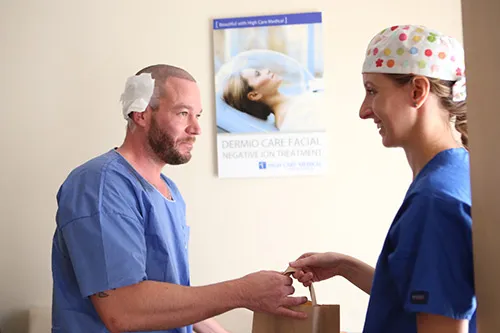
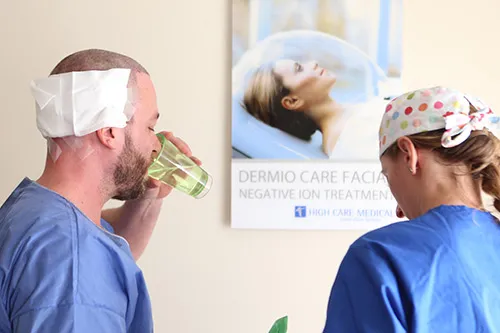
After transplantation
You can start work the next day after the operation, but you should avoid active sports for 2-3 weeks.
During the first month, the hairs in the freshly transplanted grafts will fall out and the scalp will fully regenerate. The real results start to show after about 3 months, when the real hair growth starts, thickening, more and more hairs are coming out, and you can start cutting your hair.
Six months after the procedure, the change is really visible! The areas that were previously bald will continue to thicken, you'll soon forget the operation, but we'll still check how the growth is progressing at your six-monthly check-up!
It doesn't sound so scary, does it?
Many people are scared of hair transplants because the name of the surgery makes them associate it with a serious procedure with a recovery period of several weeks. After a hair transplant, you won't be out of work and you'll only need to change your daily routine for a short period of time, with only minor changes.
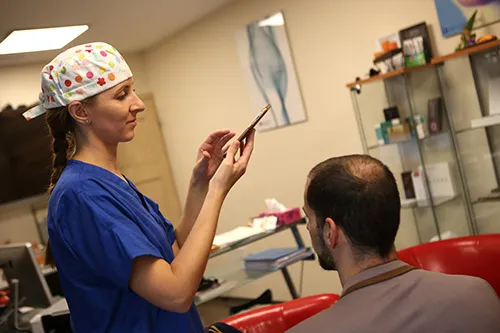
SEE WHAT HAPPENS TO YOUR HAIR IN 12 MONTHS
First week after treatment
The tiny scars start to heal, a few days of rest, no stress, no hat, no washing, sleeping with a neck pillow.
One month after hair transplantation
The scalp is completely regenerated, all the tiny wounds heal, the hair starts to grow and at the same time the hairs start to fall out (natural process!)
3 months after hair transplantation
At this point there is a turning point when the real hair growth starts, thickening, more and more hairs are coming out. At this point you can cut your old hair, the donor area is also perfectly regenerated.
6 months after hair transplantation
We are six months after the transplant and the change is absolutely spectacular! The bald areas are constantly thickening, you'll soon forget about the procedure, but we'll still check on the growth at your six-month check-up! ?
8 months after hair transplantation
The real breakthrough... By this time, the growth has already stopped, the transplanted hairs are behaving like all the others. They are strong and healthy. From this point on, it's irreversible that you're getting prettier.
INDIVIDUAL, PERSONALISED AFTERCARE
Professional Hair is unique in the market not only in that we offer a 100% guarantee on hair transplants, but also in that we offer the opportunity to nourish the new hair strands after the transplant for the richest possible effect. During the mesotherapy treatment, a cocktail of vitamins and amino acids is injected into the scalp to nourish the hair follicles with maximum effectiveness.
Hair loss or baldness?
After combing, you'll find clumps of hair in the comb. In the morning, you count the hairs on your pillow. How do you know if this is normal or the first signs of irreversible baldness?
For about 100 hairs a day, hair loss can be considered natural and normal. Everyone loses hair in spring and autumn, just like animal hair, it's perfectly normal. In addition to seasonal hair loss, temporary hair loss can often be caused by diseases or hormonal changes. In such cases, once the underlying problem has disappeared, the hair loss will also disappear.
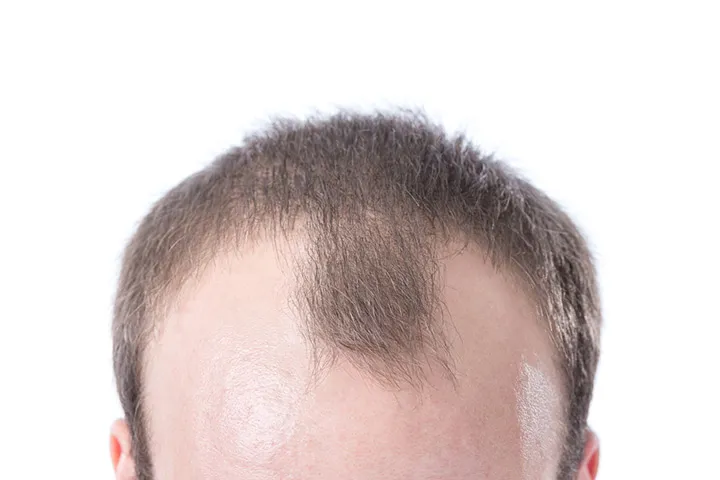
Drastic weight loss
A nutrient deficiency from a strict diet can easily lead to hair loss. In such cases, supplementation with vitamins A, B, C and E, as well as iron, copper and zinc, is recommended.
Diseases
Serious, prolonged illnesses that significantly weaken the body are often associated with hair loss. In addition, increased hair loss can be a precursor/warning sign of a number of diseases, the most common of which are: thyroid problems (over- or underactive), inflammation in the body (even in teeth and gums), iron deficiency anaemia, pituitary insufficiency.
Medicines
Taking certain medications, especially antidepressants, blood pressure lowering drugs can also be a trigger. It is also worth investigating your sensitivity to the prescribed medication, as often intolerance to a particular drug only manifests itself in less obvious symptoms, such as hair loss. Excessive intake of vitamin A can also be a common cause.
Stress, anxiety
Stress, anxiety: severe emotional distress can also lead to illness and hair loss. Severe emotional or physical overload can cause hair to go dormant more quickly.
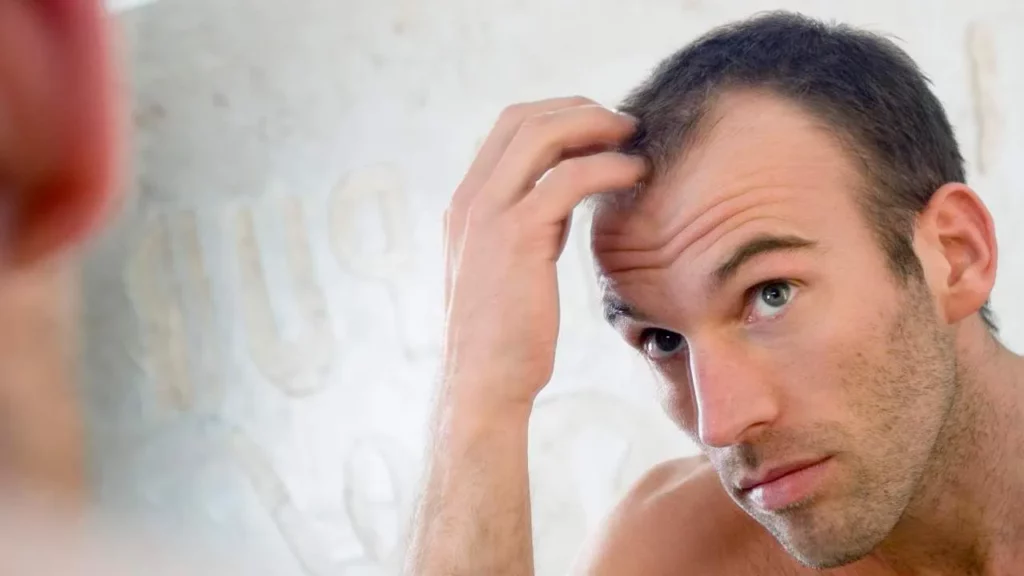
But 95% of men suffer from genetic hair loss, which means permanent baldness.
Testosterone is the male hormone. But in the prostate, adrenal glands and hair follicles, there is an enzyme that, ami a converts testosterone into the hormone DHT.In adolescence, this plays an important role, as DHT triggers the appearance of masculine body hairs. Later on, however, this hormone can cause a lot of trouble.
DHT is responsible for baldness,baldness, because although it strengthens hair everywhere except the scalp, it also attaches itself to the hair follicles on the top of the head and shrinks them.It stops the growth cycle until eventually the whole hair follicle dies. This is why many men have thick body hair but not a single hair! In addition to baldness, DHT also plays a major role in the development of prostate enlargement.
It is a fair question to ask: can baldness be treated with DHT hormone blockers? Yes, it is only possible by local injection through mesotherapy, because this treatment avoids any side effects on the male body.
Now that you are aware of the process of genetic baldness, you will understand why shampoos, hair drops and vitamins do not work.The manufacturers may want to nourish your hair with their products with the utmost goodwill, but unfortunately it's not enough against the evil play of the DHT hormone.
According to the current state of science, the only sure-fire, side-effect-free and lifelong solution to baldness is hair transplantation..


